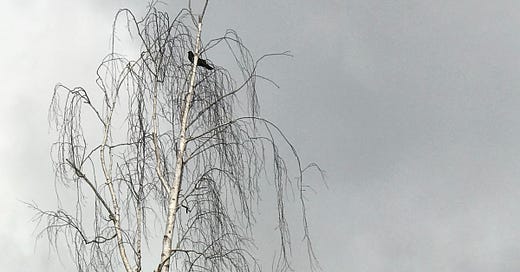Between storms
…the average atmospheric river carries an amount of water vapor roughly equivalent to the average flow of water at the mouth of the Mississippi River. Exceptionally strong atmospheric rivers can transport up to 15 times that amount.
—from What are atmospheric rivers? NOAA
In other words, it’s been wet around here. Atmospheric rivers have given me a new appreciation for storm drains. I admit it. I’d started to take them for granted.
Sage Lenier was looking for “an interdisciplinary analysis of climate solutions” while attending UC Berkeley in 2018. She didn’t find it so she designed her own course—Solutions for a Sustainable & Just Future—and taught it at UC. Forbes just published a story about this successful course that “has become the largest student-led class in university history,” still running today with 400 students signed up for Spring 2024.
One of her key questions: “What are these actionable solutions?”
Lectures are online at the Sustainable Future DeCal website. I’m working my way through them. 1: Introduction – A History Lesson has a link to the Zero Waste DeCal Resources YouTube Playlist with 99 videos. I really appreciated video #1 “Why humans are so bad at thinking about climate change” with conservation scientist Dr. M. Sanjayan. (Here’s a link to a nine-episode series M. Sanjayan did with Vox and University of California under Climate Lab. Video #1 on the Zero Waste playlist is the first in this Climate Lab series.)
It needs to be intergenerational collaboration. —Sage Lenier
I encourage you to bookmark the link to the lectures and the playlist, visit, revisit, explore, share, and let them catalyze conversations with the young people in your lives.
Sage Lenier has since founded a nonprofit—Sustainable & Just Future—a “Gen Z-led nonprofit making environmental education accessible.” Explore their mission here.
To close out today’s post, meet some Lichen geeks I came across in my web wanderings. I think these guys are definitely in the same league as Dr. Bela Barata who sought out the frogs in the bromeliads in the Espinhaço mountain range in eastern Brazil.
Here’s the description of this short National Geographic film:
For 150 years, scientists believed lichen were defined by a symbiotic relationship between a fungus and algae. Meet the team of researchers who upended this belief in this short film by Andy Johnson, Talia Yuki Moore, Chris A. Johns, and Kate Furby.
And speaking of those frogs, a reader of The Interconnect shared this page with a painting by William H. Bond showing a cross section of a bromeliad. See if you can spot the frog. What other creatures do you see? It took me a while…
[NOTE: Lots of links in this post today. I recommend reading it on a laptop so you can open links in separate tabs to explore more deeply and bookmark to return.]
Thanks for reading. Be well. And please consider sharing this post with family, friends, teachers, and/or colleagues who might appreciate it.



